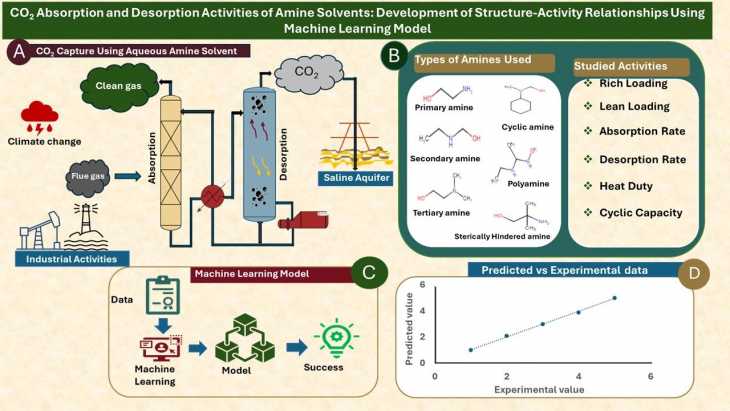CO2 Absorption and Desorption Activities of Amine Solvents: Modeling of Structure-Activity Relationship Using Machine Learning

Selecting amine solvents for CO2 post-combustion capture application requires an experimental screening of the solvents to determine their performance in terms of CO2 equilibrium rich and lean loadings, absorption and desorption rates, cyclic capacity and heat duty which differs with solvents as a function of their chemical structures.
This work is set out to establish the relationship between the structure of amine solvents and their CO2 absorption and desorption activities in post-combustion CO2 capture operations. To achieve this, a machine learning and theoretical models are developed and trained to study and recognize the various chemical structures of the amine solvents, identify a pattern in the structures and relate it to the CO2 absorption and desorption activities of the solvents at different CO2 concentrations.
The model input data are generated by performing CO2 absorption and desorption experiments on forty (40) different amine solvents at 4%, 10% and 20% CO2 concentrations. The absorption and desorption experiments are performed at 40 and 90 oC, respectively at an amine concentration of 2 M/L while the inlet gas flow rate is maintained at 200 ml/min throughout the experiment. Solvent activities such as CO2 equilibrium rich loading, CO2 equilibrium lean loading, CO2 initial absorption and desorption rates, heat duty, and cyclic capacity are determined, and used to develop and train the model. The model developed is used to predict the activities of amine solvents based on their chemical structures for use in selecting solvents for industrial scale CO2 capture application.
